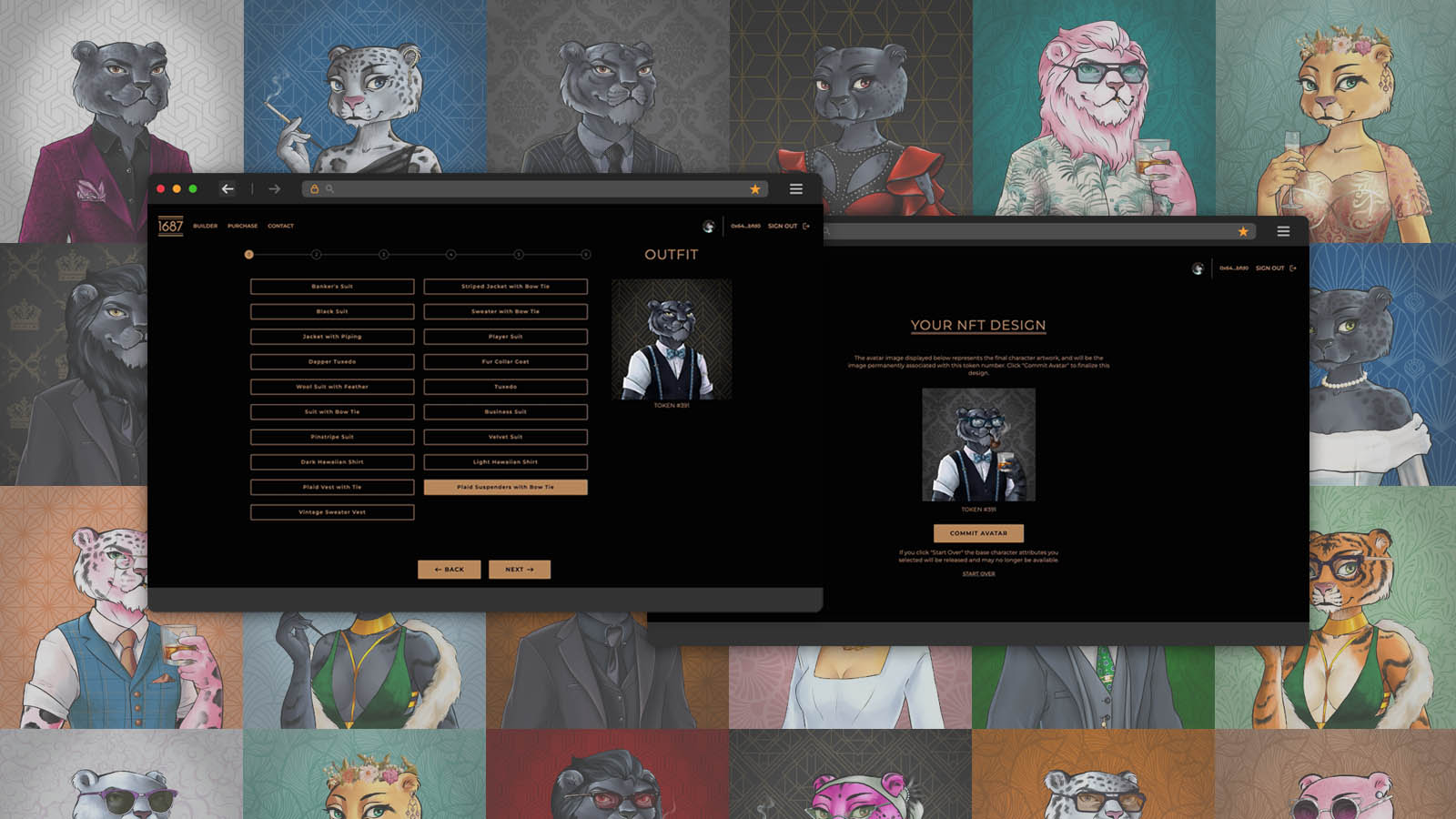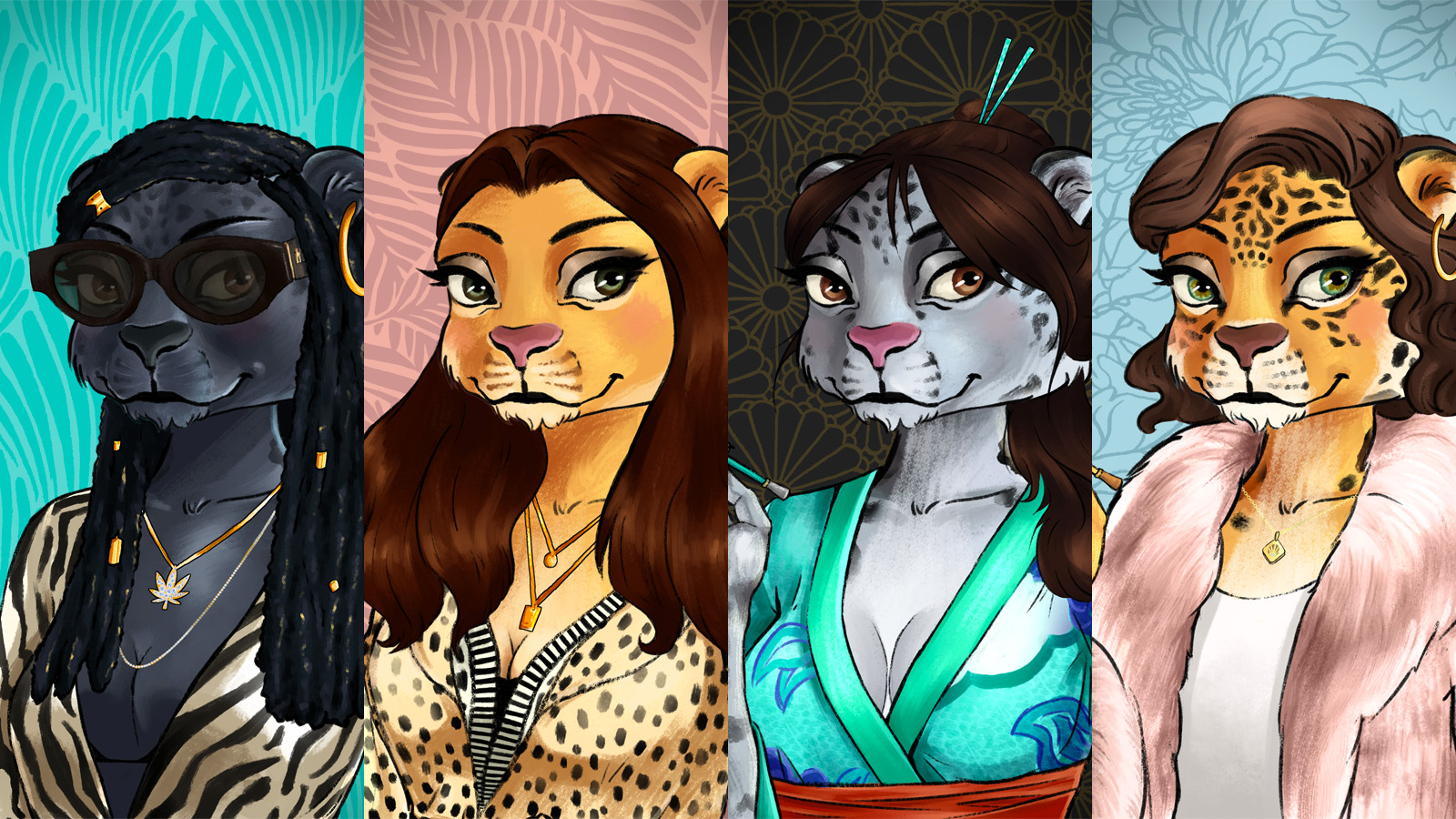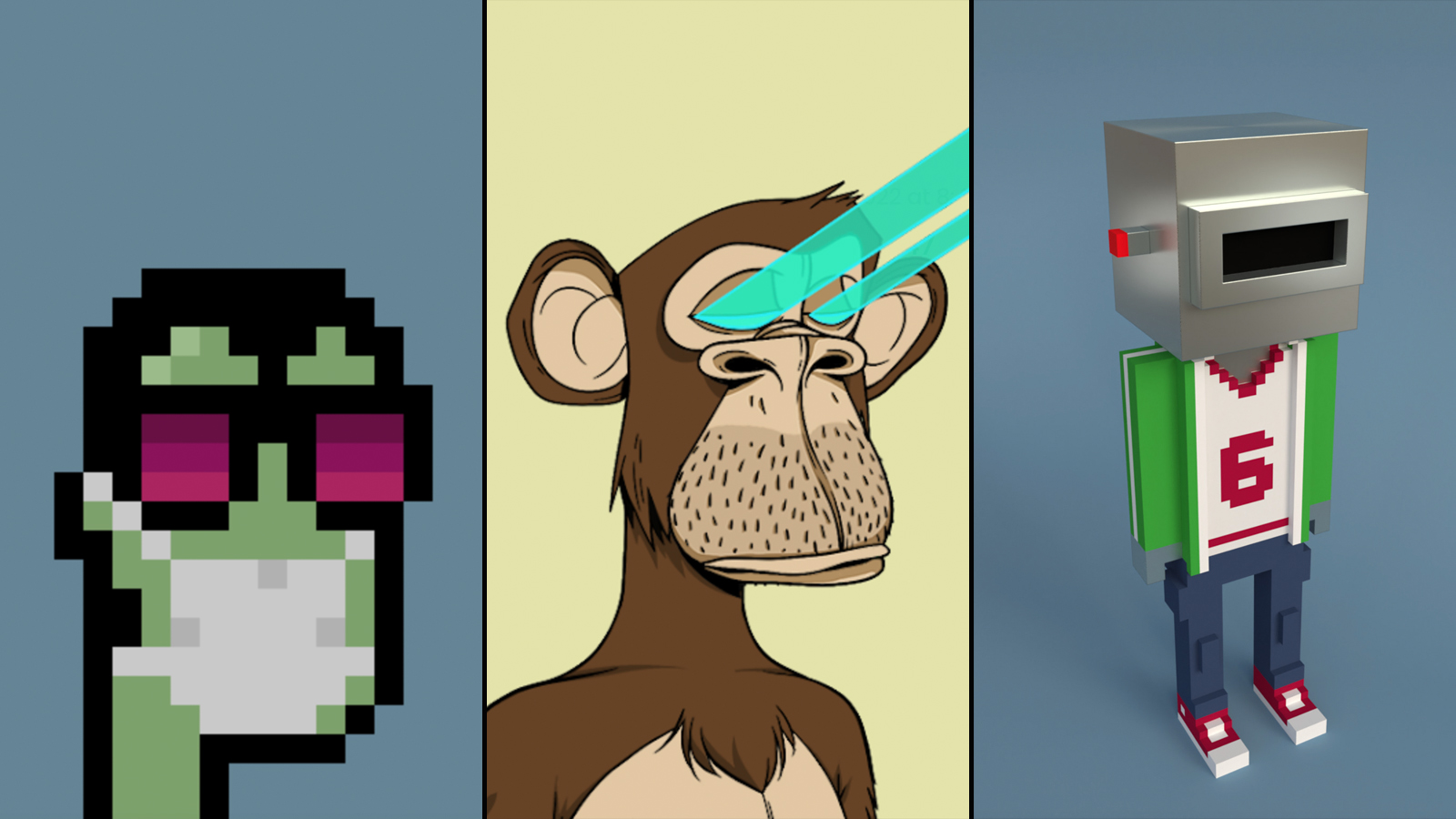1687 is unveiling a builder that allows token holders to customize their own avatars for a truly personalized PFP experience.
1687 is an NFT club of creatives, artists, entrepreneurs, and influencers working together to produce projects that bring more inclusivity and diverse representation to Web3.
To gain access to the NFT club, members had to purchase one (or more) of the initial 1,687 tokens that were minted in 2022. Each token functions as a key to the club. Once inside the club, members have access to artists, influencers, marketing, and Web3 and app development resources to launch collaborations and projects.
1687 Builder Brings Custom PFP Avatars to NFT Holders
Unlike mass-produced generative NFT collections—whose sole purpose is to sell out fast—the initial 1687 membership tokens are intended to be kept by their holders.
The women who founded 1687 decided to offer club members the opportunity to personalize their “key to the club” tokens.
After all, the only thing better than a key to the VIP room is a personalized key with your picture on it.
1687 took a page out of the NFT generative art playbook and then improved the process to allow its members the opportunity to customize their avatars.
The entire process starts with a library of digital attributes and an online builder.
How the 1687 Builder Works
To understand how the 1687 builder works, it helps to understand how many NFT artists use an algorithm to create generative collections of 10,000 (or more) NFTs.
How computer algorithms produce generative art
Mass-produced collections of randomly-generated NFTs are the norm in NFT marketplaces.
NFT artists can create a collection of 10,000 randomly-generated pieces of art by starting with a singular base character. Then, an algorithmic program quickly mass-produces these collections by randomly selecting attributes such as facial expressions, clothing, and hats. Once a combination of traits has been expressed, it gets “locked down” and no subsequent NFTs can have that same unique combination.
After purchasing an NFT from these generative collections, the holder then discovers what randomized piece of art they’ve ended up with.
It’s a “you get what you get” process in terms of art, sort of like putting a coin into a gumball machine and hoping you like what comes out.
How 1687 produces custom avatars
The first 1687 collection starts with a base character and library of digital attributes, just like many other NFT collections.
But here’s where the comparison ends.
Because the first choice a 1687 holder makes is what type of character best represents them.
The 1687 membership tokens are a big-cat theme. These Apex predators—lions, tigers, cheetahs, leopards, cougars, jaguars, and snow leopards—represent majesty, success, strength, power, and influence. Club members begin the process by deciding which big cat is the best representation of themselves (or their brand).
The builder then allows the NFT holder to further customize their avatar, choosing attributes such as background, eye color, gestures, clothing, and accessories.
Once the NFT holder has completed their avatar, the builder “locks down” that particular set of traits so the exact combination of features can’t be selected again.
There are limited numbers assigned to the different traits in the builder, with some being rare or super rare, while others are more widely available.
1687 artists release new limited-availability features and accessories into the builder for token holders, as well.
The 1687 builder uses much of the same functionality as generative art collections, however, it stands apart from the crowd by allowing users to choose the attributes it generates.
1687 Prioritizes Members Over Mass-Production
While other creators are doubling down on the mass-production generative art model in order to follow in the footsteps (and hopeful success) of collections like Bored Apes and CryptoPunks, the 1687 membership tokens are meant for a different kind of collector.
1687 members are welcome to sell or trade their membership tokens, however, their membership and club access transfer away whenever they do so. Most club members intend to keep their membership “key” and, therefore, have a strong desire to create an avatar that shows off their creativity and individuality.
For 1687, it’s all about the members.
Follow 1687 on Twitter for the latest updates on limited edition drops and new collaborative collections from our members.


